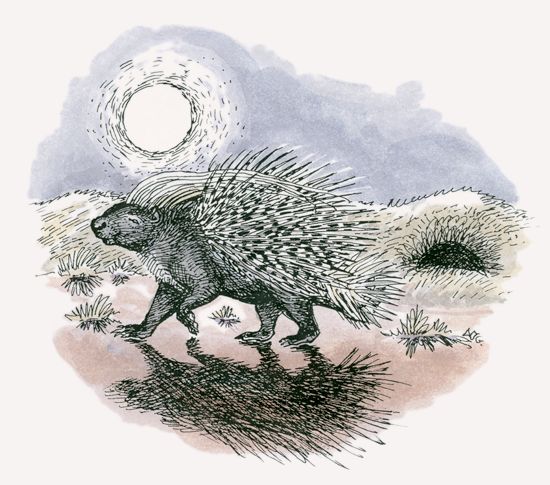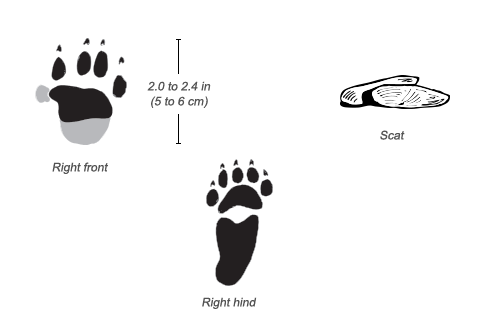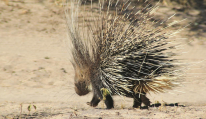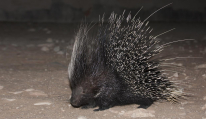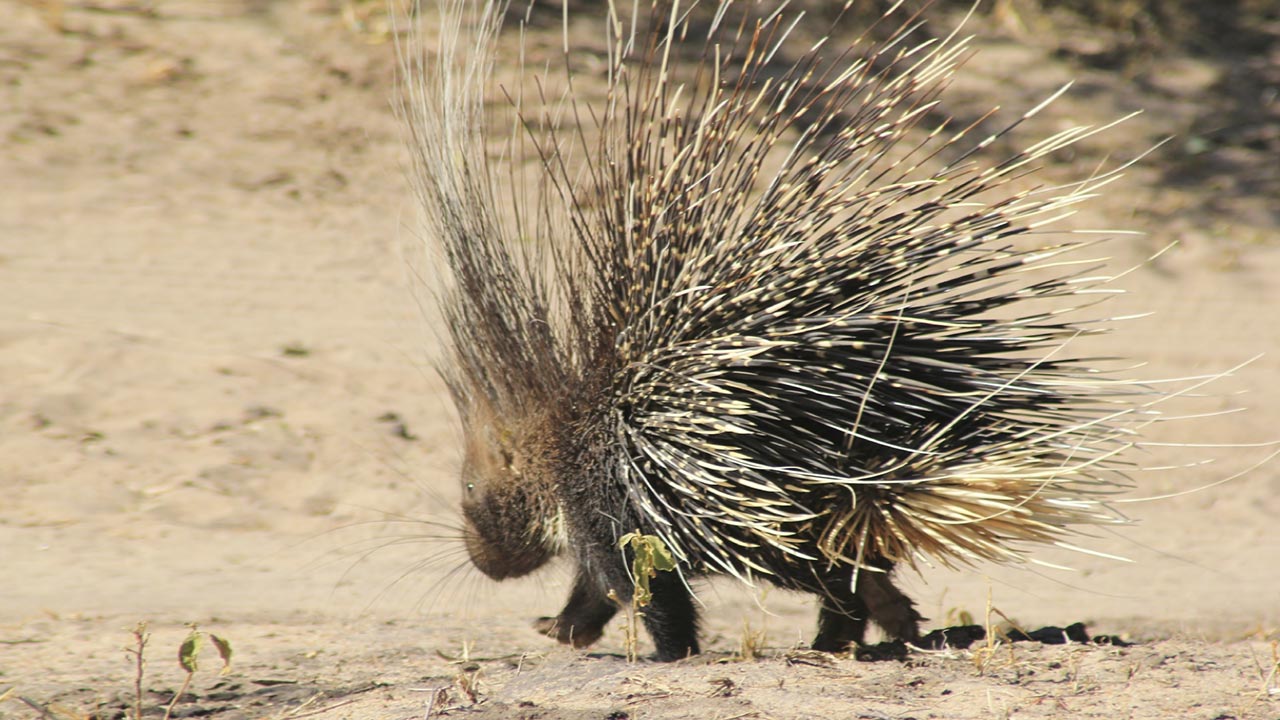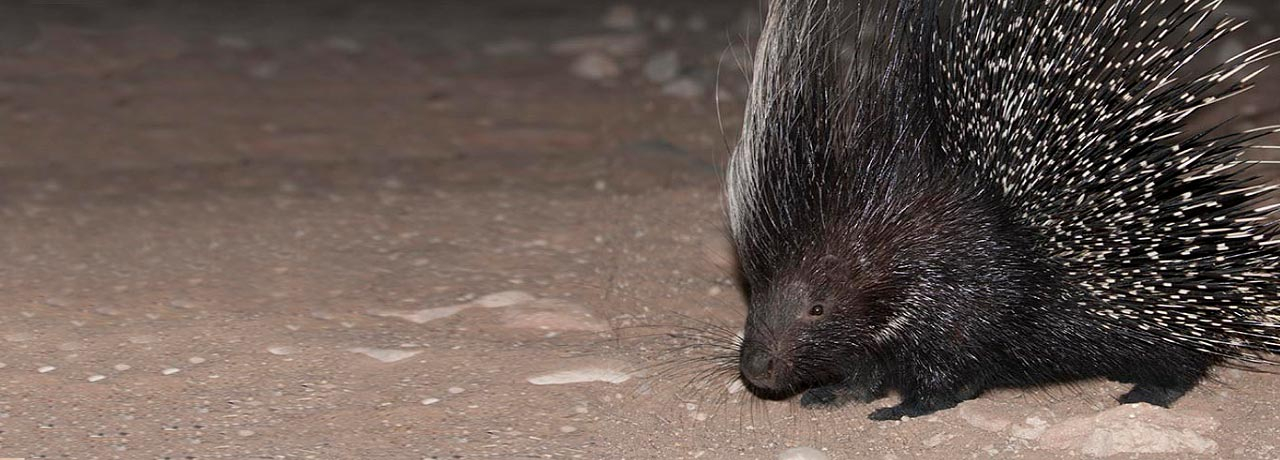Social Structure
Crested porcupines are social animals that live in small family groups. A male and female mate for life and live with their offspring of various ages in an extensive burrow system.
Communication
Scientists don’t know much about porcupine communication, but they do know that the animals use both sound and smell to convey messages. They scent-mark their home ranges with secretions from their anal glands to alert others to their presence. They also give verbal calls during mating, to warn of predators, and while fighting.
Behavior
Crested porcupines are nocturnal animals that spend the daytime hours in caves, holes under trees, or in burrows dug by other animals. They do not dig their own dens.
Conservation
The International Union for Conservation of Nature (IUCN) lists the crested porcupine as a species of lower risk. Their effective defense system limits their predation, and although humans do hunt them for food, they are not a preferred source of bush meat.

